The health trend isn’t only for January. Healthy, natural and Free from products are becoming increasingly popular throughout the year
Whether it’s stuffed with super fruits or free from gluten and sugar, consumers love their food to be packed with goodness with no added ‘nasties’.
The British public’s desire to eat more healthily has propelled fresh fruit and ‘Free from’ to become the fastest-growing products at supermarkets this year, according to Nielsen.
Nielsen’s analysis of epos data shows shoppers in the UK spent an extra £175.6m on fresh fruit last year compared with the year before, while sales of Free from products rose £122.9m (18.9%).
“You can’t deny the phenomenal rise in popularity of plant-based foods in the multiples,” says Vicky Upton, Alpro marketing controller, UK and Ireland, “and it’s clear that the convenience sector is catching up. But there are still many stores which have yet to fully grasp the opportunity.”
Upton is aware that the challenge for c-stores is space. “We know how precious chilled space is to the convenience sector, particularly as more shoppers are using small stores to top up on grocery items,” she says. “At the same time, the growth in the number of health-conscious shoppers seeking out new, plant-based alternatives makes it essential for convenience retailers to optimise this space and stock the brands that drive footfall.”
The trend
“I think people are tending towards more natural products rather than products with a long list of ingredients they don’t recognise,” says Simon Biddle, of Biddles Simply Fresh in Redditch.
“People have definitely become more aware about added sugars and salts and so are being more mindful of this when looking at products,” he adds.
Sarah Brown is senior brand manager at Calbee UK, the company that created the low-fat Yushoi Snapea rice stick crisps. She argues that health is “the most significant shift in consumer trends in the past year”.
“With people becoming more demanding when it comes to the foods that they eat it is important that retailers ensure the products they stock meet with the needs of their customers,” she explains. “People are more expectant than ever before; they want to purchase snacks that deliver some added value.”
The rise of Instagram-users snapping pictures of their porridge bowls and healthy meals also means that ‘healthy’ and ‘natural’ are now considered some of the fastest-growing need states among consumers, according to Kantar (September 2015).
In looking to provide customers with that extra added value, retailers have a large and growing range of options available to stock.
Emma Lawson is category buyer for the Royal Voluntary Service-owned Revitalise store in Western General Hospital, Edinburgh. The store has achieved the Scottish Grocery Federation Healthcare Retail Standard, which requires that 50% of products meet nutritional criteria.
Emma says: “We’ve definitely found there’s a lot more demand from customers around dietary requirements such as gluten- and dairy-free, vegetarian and vegan. Manufacturers are now leaning towards providing a wider range of products to provide for those needs.”
Emma has also noticed shoppers actively seeking healthier alternatives, especially when it comes to sweet snacks.
“The sweets and snacking category is where we are seeing the most growth in healthy products. The Nakd bars, which contain pure fruit and nuts and no added sugar, are the type of product people are swapping to, from standard confectionery.”
Mintel has backed up this trend with its own research showing that 74% of consumers claim they would like to see a greater variety of healthier snacks for eating on the go, and 76% who would like to see a wider choice of healthy snacks in convenience stores.
Avtar ‘Sid’ Sidhu, of Sukhi’s Simply Fresh and Post Office in Kenilworth, Warwickshire, adds that simple portion-sized packs of dried fruit, nuts, seeds and coconut chips are popular with his shoppers, despite their high price tag.
war on sugar
Sugar-free is another huge health trend, especially within soft drinks as manufacturers work to address the impending sugar tax.
Britvic was the first UK soft drinks company to introduce stevia. Phil Sanders, GB commercial director At Home at Britvic, says: “We understand that consumers are increasingly interested in their health and recognise that obesity is a growing societal problem across the world. As a leading soft drinks manufacturer, we want to play our part in tackling it and that’s why leadership on health has always been part of our business strategy of building trust and respect in our communities.”
Britvic has also reworked its products to appeal to the sugar-conscious shopper. It has removed added sugar in Robinsons Squash and Fruit Shoot ranges in Great Britain, and Drench has been reformulated with a reduced sugar content.
Sanders says: “We’ve grown awareness of our healthier choices through our Responsible Marketing Code. Our code ensures that 75% of our marketing budget is spent promoting low- and no-sugar alternatives; we do not advertise products to children under 12, and do not advertise high-sugar products to under-16s.”
He points out that some 68% of its GB portfolio is exempt or below the threshold of the proposed soft drinks sugar levy.
Free from
One of the biggest health concerns that Emma has noticed is the shift toward gluten-free diets. She says this has led to an increase in the popularity of products that have always been gluten free, but had previously been seen as niche products, such as Mrs Crimbles.
In fact, Nielsen has found that Free from’s growth means it’s worth £772.2m a year and is now a bigger category than instant coffee and sparkling wine. The company also points out it is “nearly 40% bigger than a signature staple of British consumption – tea”.
It seems clear that the demographic of shoppers pushing this trend is the millennials. Research shows that healthy snack purchases over-index in the millennial generation, who are the most frequent snackers, be it a purposeful, planned or spontaneous purchase (Nielsen 2014). This is important as, by 2020, millennials will represent 75% of the workforce and therefore will represent a key convenience food market customer base (Elior, 2014).
New research from HIM also found that it is the 16– to 34-year-olds who are most likely to state that they have a food intolerance, with 30% claiming to be sufferers. Half of these cases are self-diagnosed.
The number of consumers stating they suffer from food intolerance reduces by age group with 15% of 35– to 45-year-olds and 8% of those 55+.
“High numbers of shoppers are self-diagnosing, which is likely due to the increased availability of resources for doing so with the internet which has been driven by a Free-from craze” comments Alice Dolling, insight analyst at HIM.
Tom Mercer, founder of the healthy breakfast brand Moma, says the Free-from trend has had a significant impact on the breakfast category and will continue to grow within 2016.
“With 15% of consumers now buying gluten free (Mintel June 2015), there is a considerable appetite for Free-from options, with the appeal of these products becoming more widely accepted by consumers.”
James Brundle’s Eat 17 stores in Whitstable in Kent and Hackney and Walthamstow in London are full of alternative and vegetarian products.
“The Free-from category as a whole sells really well,” he says. “The absolute basics are the dairy-free milks. I sell a huge range and I’d say the almond, soy and coconut milks are all essential to have in a convenience store.
“If retailers don’t have those in their store they really should as they’ve become a staple now.”
While the gluten-free category is becoming more established in the mainstream market, almost one in four households are also buying into the plant-based category, such as Alpro, and there is an increasing popularity among dairy-free and plant-based products.
Dairy-free milk alternatives have jumped 49% to £241.1m since 2014. Soya and nut milks are leading the way in dairy-free alternatives, with 17% opting for almond milk specifically. Alpro is the most popular Free-from brand with annual sales at £151.9m, followed by Lactofree (£49.2m), aimed at lactose intolerance, and grain-free snack brand Nakd (£36.3m).
HIM’s Dolling adds: “Retailers should be looking to stock soya and nut milks as a minimum. Stock fresh options, but also long life as often fewer people in a household will be drinking dairy-free milks compared with dairy.”
Sid says this is a growing area for his store and has ensured to provide gluten- and dairy-free alternatives throughout every category of his store.
“If you’re going to offer gluten- and dairy-free alternatives, you’ve got to do it properly and provide alternatives across every key category where there’s daily consumption. I sell all the dairy milk alternatives – almond, coconut, oat, soy – and I’d say they’re all just as important as each other. “There might be some customers who are dairy intolerant who also can’t drink soy or might be allergic to coconut so it’s important to have at least one brand of each alternative.
“It’s important to have gluten-free breads available, as well as snacks and biscuits. We try to provide breakfast, lunch and dinner solutions.”
Sid points out that there are two main groups of people who buy into the gluten-free category. “You’ve got your shoppers with intolerances and your shoppers opting to eat gluten-free because they see it as being more healthy – that’s probably the biggest movement in consumer perceptions. I think this increased interest in gluten is because of the press making people so much more aware of what’s in their diets and how it affects them.”
Merchandising
With all these different elements of healthy eating to fit in, it’s important to merchandise these products in a way which isn’t too complicated and which shoppers can shop without feeling overwhelmed by health messaging. Emma says it’s important to keep the shopping experience as ‘normal’ as possible.
“We have found from past experience that people don’t take particularly well to being told what they can and can’t eat so it’s important to get that balance in store.
“We still stock the top 10 confectionery lines, but we give more prominence to the likes of the Nakd bars, Perkier bars, packs of dried fruit and nuts, and Urban Fruit snacks which come in small portions of 30g or 40g. Consumers are happy to be given these options, but we aren’t taking away the core lines so they have the choice.”
Some retailers are defining the healthier category offer within their stores with signage and special areas such as “Healthier Snacking” bays, aisles and ends.
Gary Coggin, channel controller for 9Bar, believes that retailers can capitalise on impulse distress purchasing by placing the products on till points, within queue systems, front of store as well as within the snacking on-the-go category.
HIM’s Dolling adds: “If there is space available, a designated Free-from area will attract those with food intolerances into a store over a store without. Such initiatives can ease shoppers’ experiences as they are able to find items quicker, resulting in increased shopper trust that the store provides products they can tolerate.”
Brown agrees that dedicated fixtures, special displays and signage are the best way to highlight these products. He says that clearly labelling what ingredients products contain will help retailers to showcase that they cater for this trend. He points out this will also help consumers to make quick and informed choices.
For the smaller stores that can’t create dedicated fixtures, many suppliers are offering marketing materials such as shelf wobblers, counter display units, dump bins or POS to make products stand out.
Yushoi Snapea’s Sarah Brown points out that people often want to try something different so as well as picking up their preferred choice, retailers could give them the chance to try new snacks by holding sampling sessions
Top tips from Yushoi
Rice stick crips brand Yushoi offers these top tips for maximising healthy snacks sales in c-stores:
Make sure you stock a full range of Free-from snack products which include a variety of ingredients, not just potato
Choose a selection of snacks that are baked and better for you, and ensure these products also feature at the till points to drive impulse sales
Create theatre in-store with meal deals or Big Night In sections to direct people to make choices that will build on incremental sales
Try sampling
Make sure that snacks that are better for you are clearly distinguished as offering additional benefits such as high in protein and fibre, which will keep people fuller for longer.
Pricing
Of course, many of the healthier alternatives on the market tend to come with a higher rrp. In fact, HIM has found that eight out of 10 Free-from shoppers believe Free- from products are more expensive. However, Gary Coggin, from 9Bar, argues that price is not an issue and these consumers don’t want to compromise when it comes to their health needs.
Dolling suggests shoppers simply need to believe the higher price is justified and they’ll be happy to shell out. “Suppliers and retailers need to shout about all the other benefits that come along with Free-from products as opposed to just the benefit of satisfying intolerances. Communicating the health benefits and product versatility through packaging, in-store signage and social media is key.”
What next?
Brown concludes: “With the government and the media continuing to focus on obesity and products high in sugar, salt and fats, better-for-you will continue to be a key trend in the next year. This will also result in the demand for more flavour choices, as well as even more exciting and innovative ingredients.”
James, of Eat 17, advises other retailers to make the most of the great selection of healthy, natural and Free from food and drink.
“If retailers want to sell these products I would say it’s not worth just dipping your toe in. Don’t just get one Alpro yogurt and think that’s enough to keep dairy-free customers coming back. Try a range of brands and trial them to find the right products for your shoppers and for your location.”
Complete meal solutions
New brands are coming to the market, offering healthy ready meals. Fit Kitchen, for example, has created a range of ready-made meals (rrp £3.80) which will be available from this month. The range includes Pad Thai Chicken with Zesty Sauce; Middle Eastern Grilled Chicken; Malaysian Grilled Chicken; and Kung Pao Chicken.
Each meal is high in protein, vitamin and fibre, but low in calories and saturated fat, and contributes to three of your five a day.
Sales director Daniel Litchfield says: “We have seen a number of markets respond to the interest in positive wellness, changing their offering based on a smarter, more health-conscious approach to diet and exercise.
“The Fit Kitchen brand is predominately targeting people who don’t diet; they choose to eat healthily to support their active lifestyle. We have made the packaging clear, youthful and bright, as we know the growing interest in health, food and fitness has become typically gender neutral.”
Another healthy ready-made meal solution is NutriPots from Nutripot Nutrition. Each pot (rrp £2.49) is high in protein, low in saturated fats, contains no added sugar, artificial colours or preservatives. They contain added vitamins and minerals.
The range includes: Aromatic Thai Noodles; Chicken & Mushroom Noodles; Moroccan Couscous; Quattro Formaggi Pasta; and Pasta Bolognese.
Nutripot Nutrition director Robert Rona says: “Consumers want it all and are willing to pay more for premium products with added benefits.”





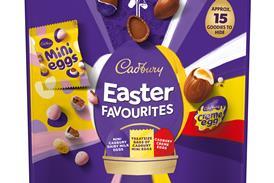
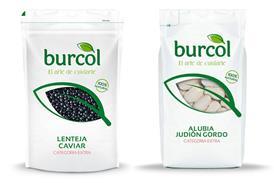


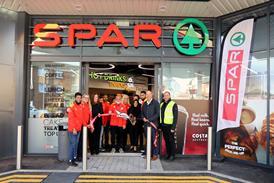







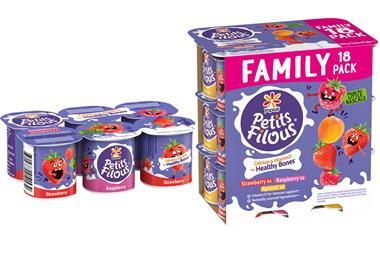

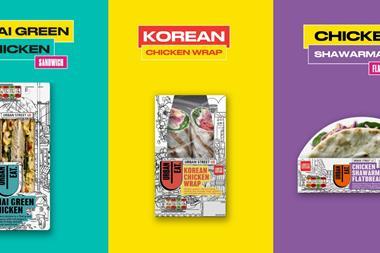
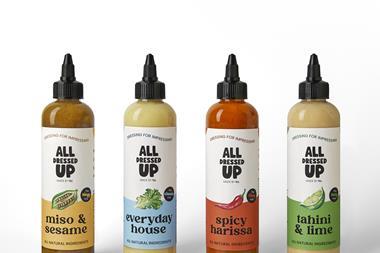
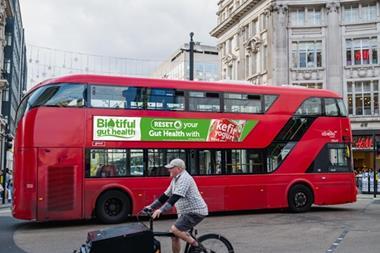






No comments yet